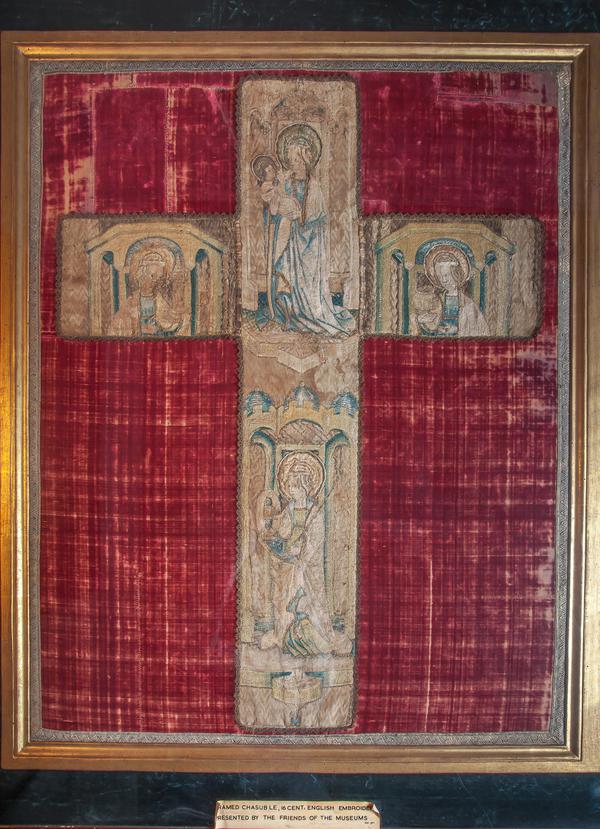chasuble
Accession Number NWHCM : 1951.168
Description
Part of a velvet chasuble from the early 16th century, cut down to a rectangle including the orphrey, possibly as the result of the Reformation. Embroidered in silk and gold thread depicting the Virgin Mary and Child, Saints Catherine, Barbara and Dorothy.
Read Morechasuble
This section of cloth was once part of a chasuble, part of the traditional clothing of the Christian clergy worn during Holy Communion. Chasubles are similar in make-up to ponchos, and are worn over other traditional vestments. They have their origins in the Latin 'casula', a travelling garment worn during the late Roman Empire, just prior to the beginning of the Middle Ages. This chasuble was cut down to this relatively small rectangle which contains the orphrey. The orphrey is a delicately detailed embroidery which was often featured on religious garments during this period. The orphrey itself, with its depictions of religious figures, is bound with silver braid and is likely to have once sported a background of gold theatre, which is no longer present. This section of the chasuble was probably cut out to preserve it, while the rest was discarded. This was due to the Protestant Reformation in the sixteenth century.



